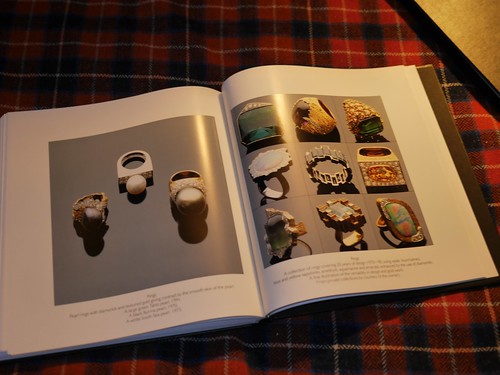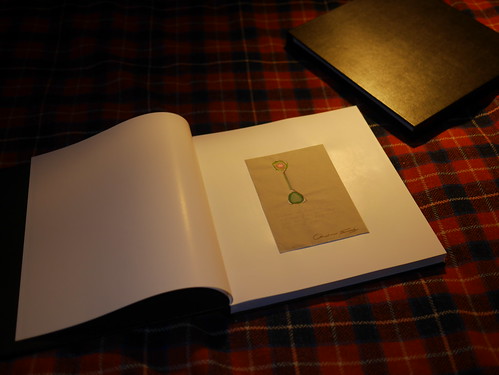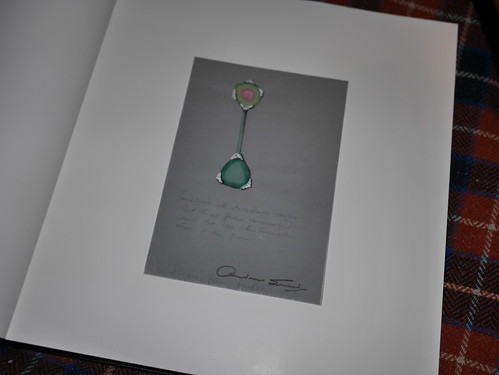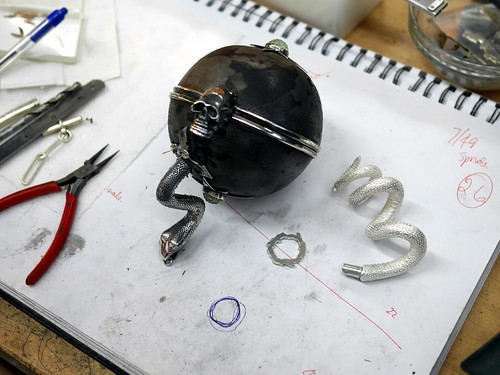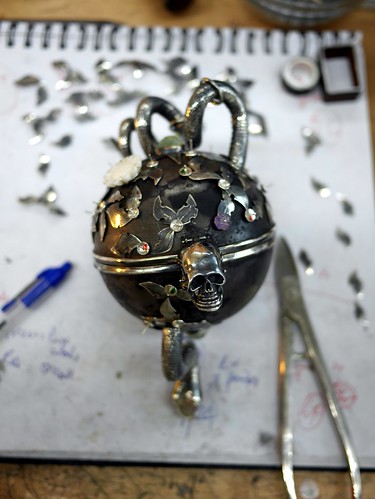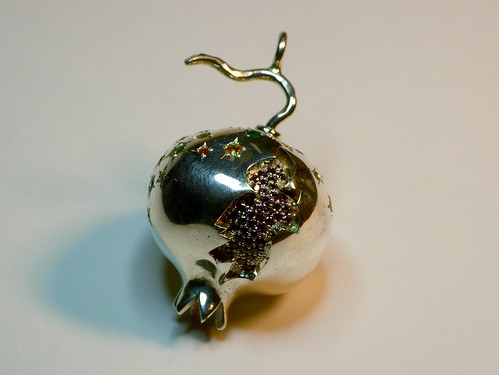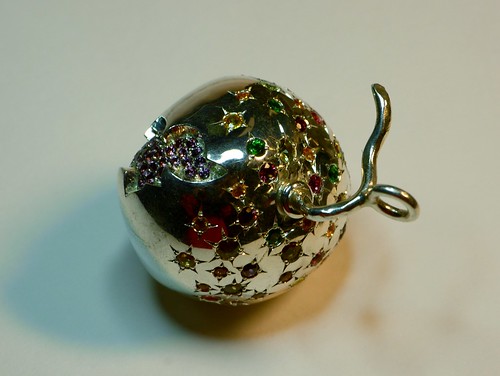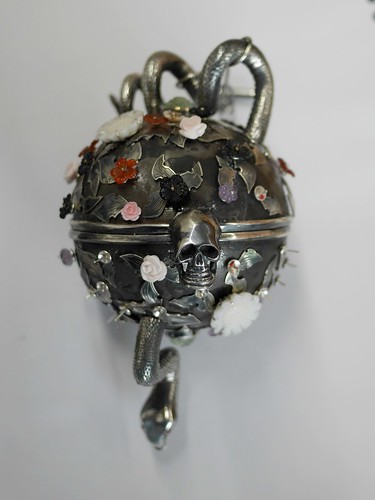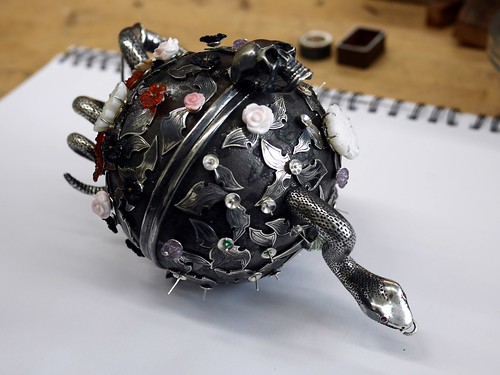My first real awareness of "contemporary jewellery" came when I worked for John Gilchrist in his small workshop in Bothwell, the Lanarkshire village where I spent most of my formative years. You wouldn't really be able to describe John's work as "contemporary" in the sense we understand it today: it was modern, artisanal, interesting but not challenging in any way. No boundaries were pushed.
I worked for John intermittently for a number of years from when I was about 14, doing what I thought was a summer-holiday job and never suspecting that it would become a career. One day when I was at a loss for things to do, I was given a most unusual piece: a pendant made of thin sheets of heavily textured gold which were formed into waves and hung longitudinally in roughly graduated lengths. The waves were soldered together where they touched and the whole was set with deep green tourmaline crystals. My job was to effect a repair where two of the sheets had split - it looked like some careless person had stood on it - and the pendant had come in two.
This was an interesting job as it was far from straight-forward: the tourmalines had to be unset and the surfaces cleaned and this was the first time I had ever tried investment soldering - where investment plaster is used to hold the pieces together while soldering (today I would use my PUK welder!).
It turned out that I was working on a piece by Andrew Grima the legendary British/Italian jeweller who wowed "swinging London" with his revolutionary sculptural jewellery, using massive textured metal and fine gemstones alongside raw minerals and rocks. I never forgot that piece and looked out for more. Though I never got to handle another, I became fascinated by his work, seeking it out in exhibitions and galleries and even occasionally in auction catalogues.
Cut to the beginning of the week, 17th of March, 2014... A comment on Twitter mentioned that Francesca Grima - Andrew Grima's daughter - had been featured in GQ magazine for this month and that she has opened up a new "Grima" shop in London once more. Unable to contain my excitement, I looked up the Grima website for more details and was blown away by her own interpretations of her father's style. I also noticed that there was a privately-printed, limited-edition monograph of Andrew Grima's work and sent off an email asking if it was still available. To my enormous joy, back came an email from Francesca herself, offering me a copy which duly arrived on Thursday. (It would have been Wednesday but someone in the mailroom couldn't be bothered dragging the huge parcel up to my workshop, I think!)
What I was not prepared for was the incredible treat in store for me just inside the front pages:
An original Andrew Grima paint-up for a tourmaline earring, included by his wife, Francesca's mother, as a beautiful surprise:
This is, without a doubt, the most wonderful and unexpected gift I have ever received.
Andrew Grima - without knowing it - was a major influence on my own work, his monumental cocktail rings; his jewellery for men; his use of crusted textures and the abandon with which surfaces are scattered with gems; his joyful use of colour. More importantly, perhaps, is the fact that he made me realise that "contemporary jewellery" and "fine jewellery" are not necessarily in opposition. When I was learning to be a bench jeweller, the European minimalists - Kunzli, Meierhoffer et. al. - were on the rise, often wilfully rejecting traditional jewellery techniques in favour of concept. Grima's work was modern (modernist, even) but firmly rooted in the traditions of "fine jewellery" and the joy he plainly found in using precious metals, sensuous textures, beautiful gemstones and riotous colours was very much part of that tradition, building on it, blowing it open, pushing it forward with the confidence of an artist who knows that he has nothing to prove, no agenda to further.
As I said in an email to Francesca, "I will stop now before I become a gushy fan-boy"... but I think it might be too late!
Back to my own workshop now and I have leapt ahead in the production of the final part of my Alexander McQueen tribute, "Fashion:Victim", the second ball/handbag, "Before The Fall". This has been a somewhat stressful undertaking as there are some 350 separate elements making it up, all having to be assembled in the correct order, starting with the setting of the carved prasiolites on the stars, affixing the stars and then starting on the snake element. I missed out photographing a number of those stages so here they are, condensed into one:
I then started attaching the other supports and leaves for the floral elements, which included about a dozen flowers which had to be attached directly:
I also took delivery of the pomegranate element which will hang from the mouth of the snake, stone-set by one of my students, Inness Thomson:
Inness is an exceptional stone-setter. This wouldn't look anything near as good if I had attempted it myself! It is set with rhodolite garnet "seeds" and the top is set with Mali and Tsavorite garnets, orange and yellow sapphires, zircons and spinels.
At the end of the day today, the whole piece looked like this:


